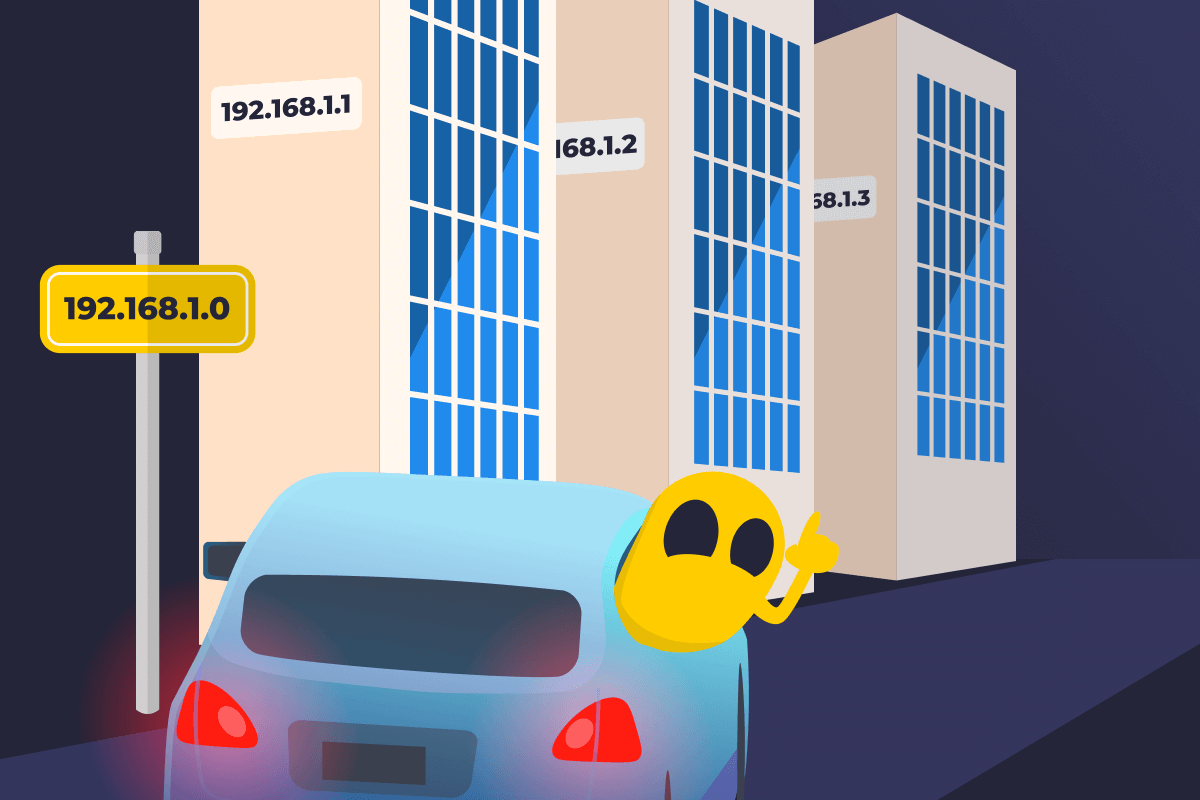Network ID

Network ID Definition
A network ID is the part of an IP address identifying which network a device belongs to. It helps route data to the right place on a network. Every device on the same local network shares one network ID, and the remaining part of the IP address (the host ID) identifies the specific device.
Where Can I Find My Network ID?
To find your network ID, you need your IP address and either a subnet mask or CIDR notation. Both methods tell your device how much of the IP address identifies the network versus the host (your specific device).
In IPv4, this is often written using a subnet mask like 255.255.255.0, or more commonly today, in CIDR notation using a network prefix like /24. These both mean the first 24 bits (or first three octets) of the IP address make up the network ID. For example, if your IP address is 192.168.1.45, your network ID is 192.168.1.0, and your host ID is .45.
More complex networks may use different subnet masks (like 255.255.0.0 or 255.255.255.192) or prefixes like /16 or /26, depending on how many devices are on the network.
The table below shows how this can look:
| IPv4 address | Subnet mask | CIDR | Network ID | Host ID |
| 42.168.1.2 | 255.0.0.0 | /8 | 42.0.0.0 | .168.1.2 |
| 131.168.1.2 | 255.255.0.0 | /16 | 131.168.0.0 | .1.2 |
| 192.168.1.2 | 255.255.255.0 | /24 | 192.168.1.0 | .2 |
Note: CIDR values shown here are typical examples, but actual CIDR may vary depending on how the network is configured.
Network ID in IPv6
In IPv6, the network ID works the same way but uses a longer format that includes both numbers and letters, since IPv6 addresses are 128 bits instead of 32. For example, 2001:0db8::/64 uses the first 64 bits as the network ID, and the rest identifies the specific device, or host, on the network. CIDR is the standard format for defining network sizes in IPv6, and it is also widely used in modern IPv4 networks.
Why Do Network IDs Matter?
Network IDs help route data more efficiently. Instead of analyzing every full IP address, routers use the network ID to quickly decide where to send data, which reduces network congestion and improves speed. They also help organize IP addresses by grouping them under the same ISP, company, or region, so it’s easier to manage large networks and identify where traffic is coming from.
How Do Network IDs Affect Privacy?
The network ID is part of your IP address and shows which network you’re connecting from. It doesn’t identify your specific device, but it can reveal general details, such as the network’s location, ISP, or organization. Websites and platforms may use this to track repeated visits from the same network, apply location-based settings, or limit access after too many requests from one source.
Using a secure VPN doesn’t change your local network ID, but it does encrypt your traffic and assign you a new public IP address from a VPN server. This helps limit what external networks or websites can see about your activity, making it harder to link your browsing to your device.
Read More
FAQ
Not directly. Most devices won’t label it as a network ID, but you can figure it out using your IP address and subnet mask or network prefix. Most home Wi-Fi networks use the 255.255.255.0 subnet mask or /24 network prefix, which means your network ID is usually the first three octets (24 bits) of your IP address. If your IP is 192.168.0.12, then your network ID is 192.168.0.0.
No. A network ID is part of an IP address. It identifies the network a device belongs to, while the full IP address also includes a host ID identifying the specific device. You can determine your network ID from a device’s IP address by using a subnet mask or a network prefix.
A network ID identifies which network a device belongs to. A subnet mask tells the system how much of the IP address is used for the network ID and how much is used for the device (host ID). For example, if your IP address is 192.168.0.25 and the subnet mask is 255.255.255.0, then your network ID is 192.168.0.0 and your device’s unique ID is .25 (from the subnet mask).
A network ID identifies the entire network (or a subnet) your device belongs to. A host ID identifies the specific device on that network. Together, they form a complete IP address. Every device on the same network shares the same network ID but has a unique host ID.

 45-Day Money-Back Guarantee
45-Day Money-Back Guarantee